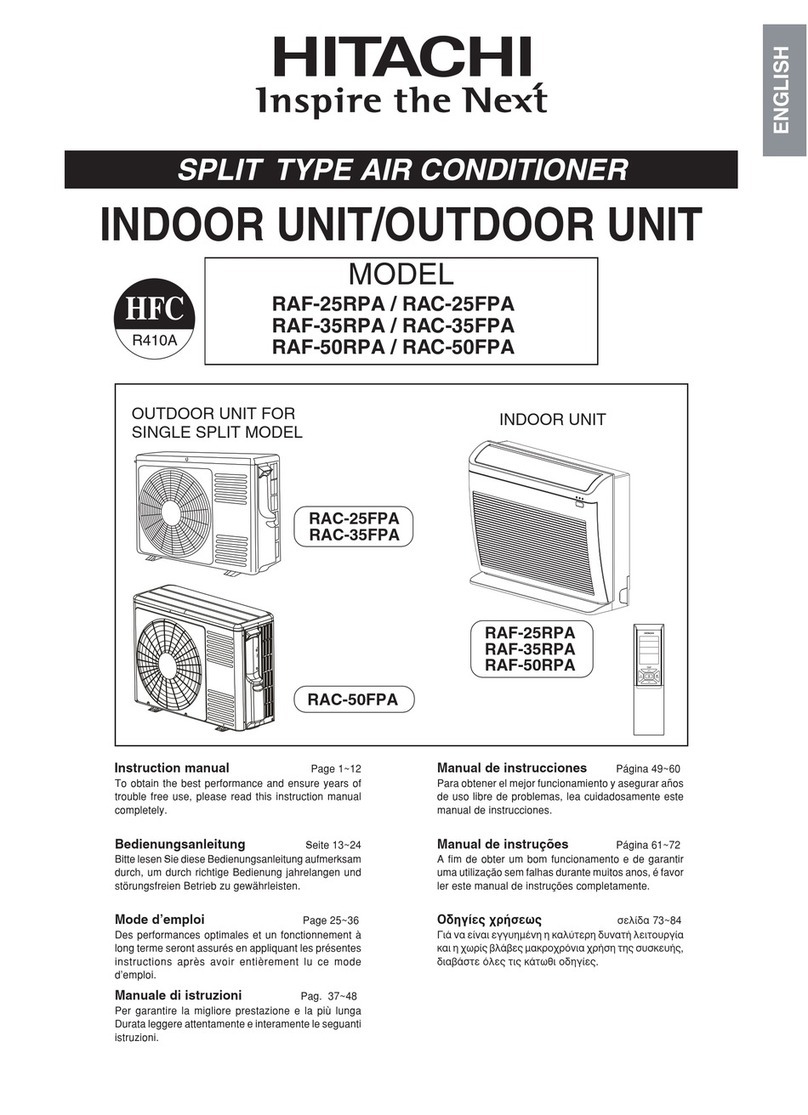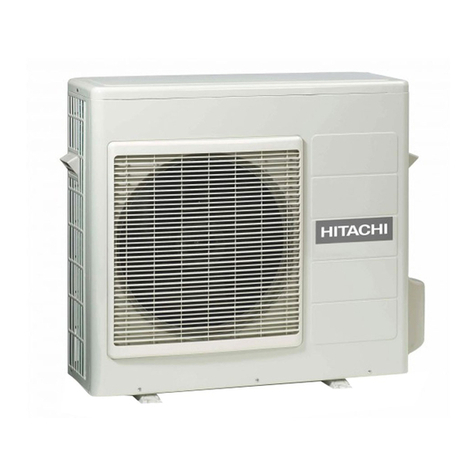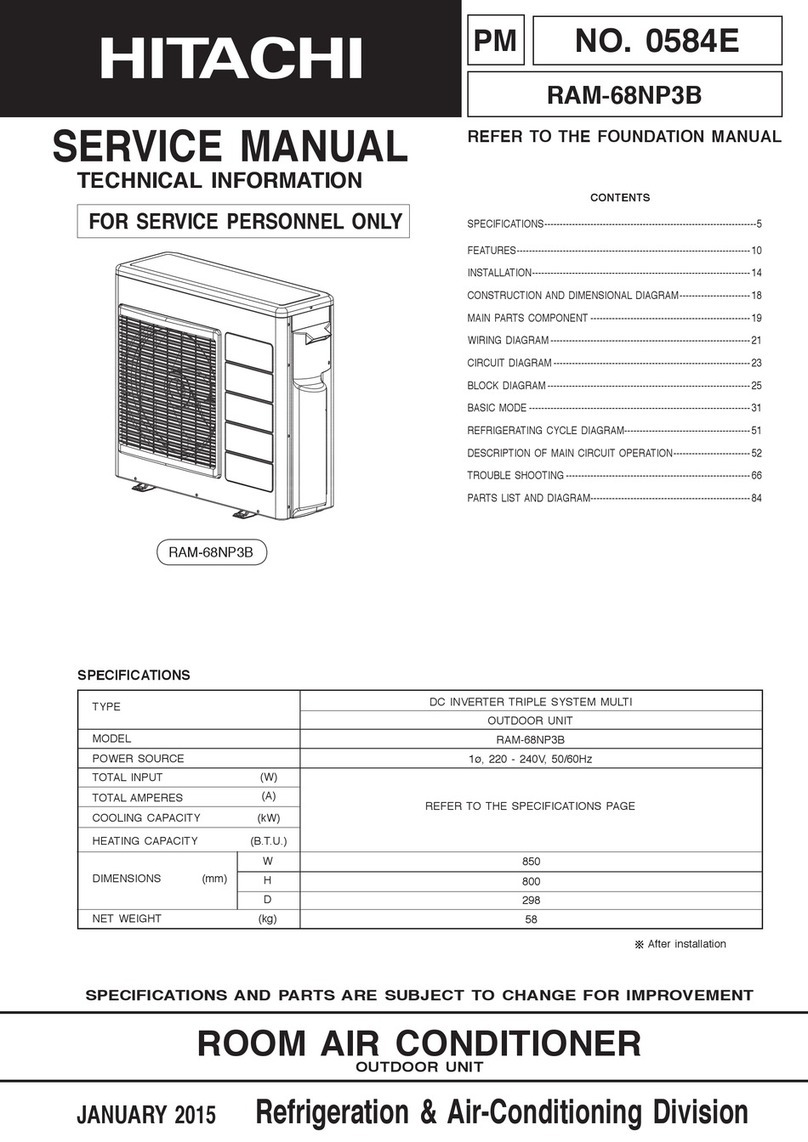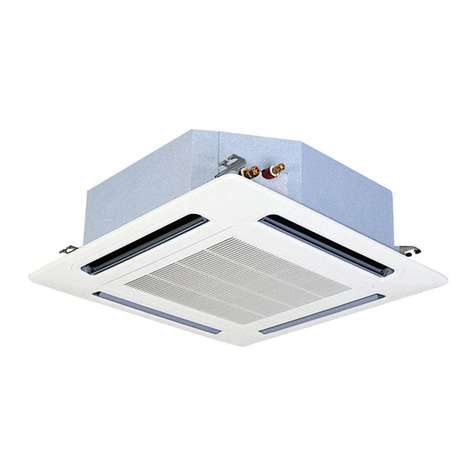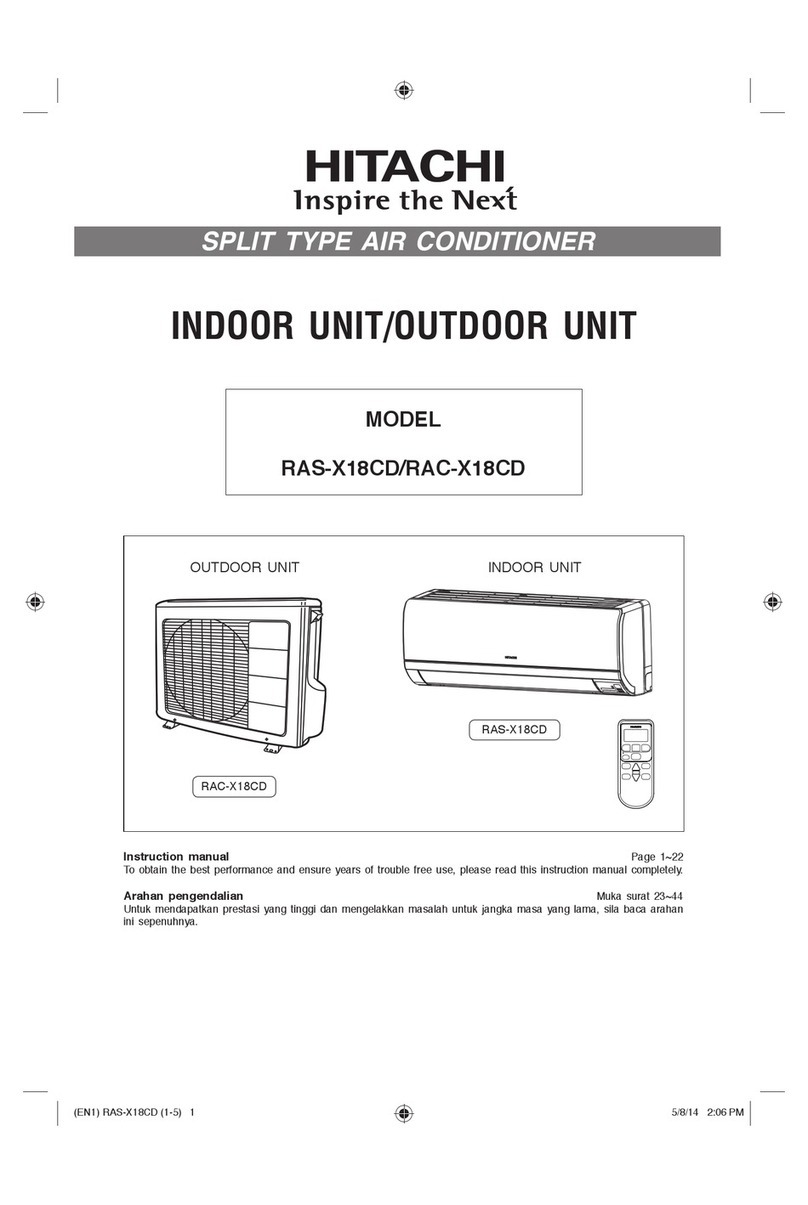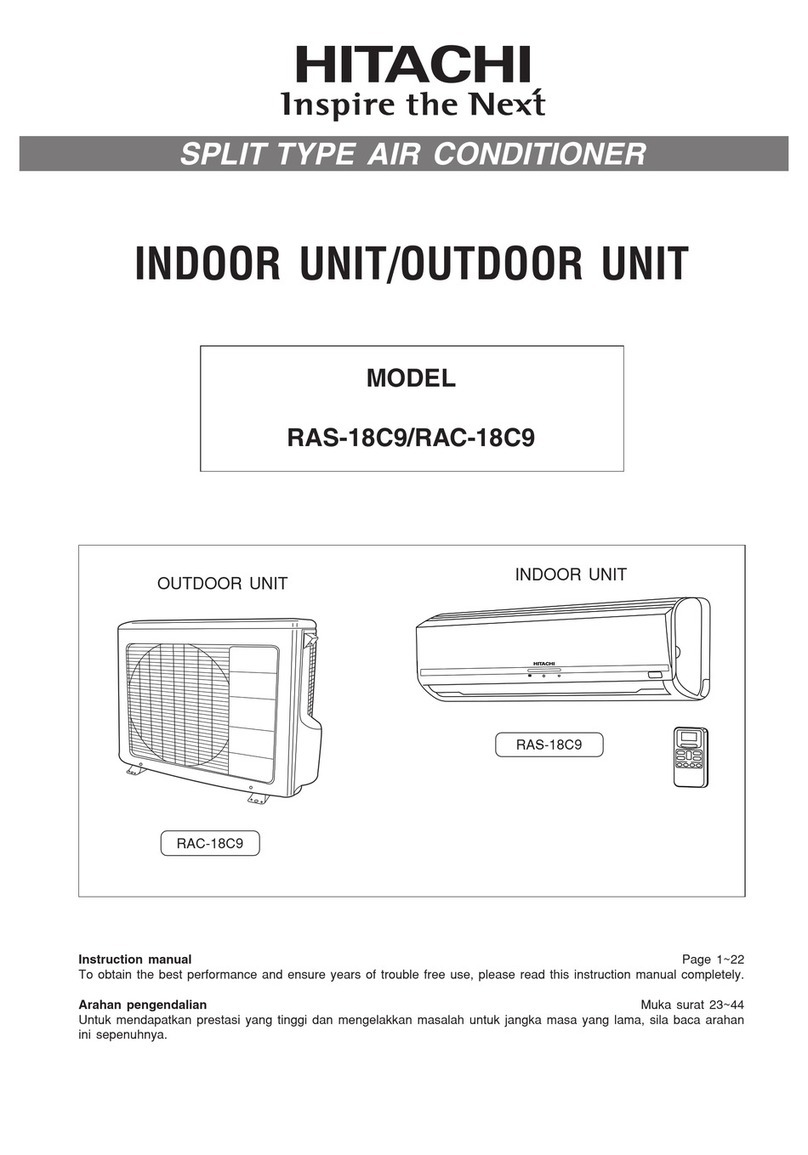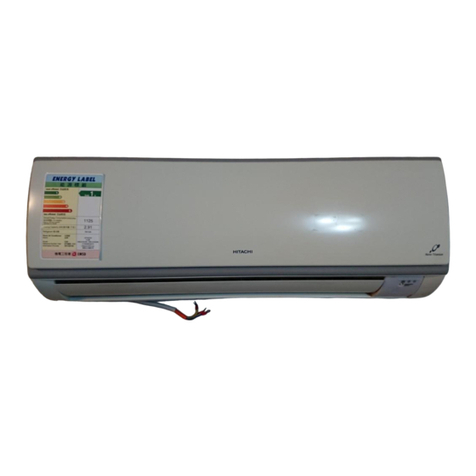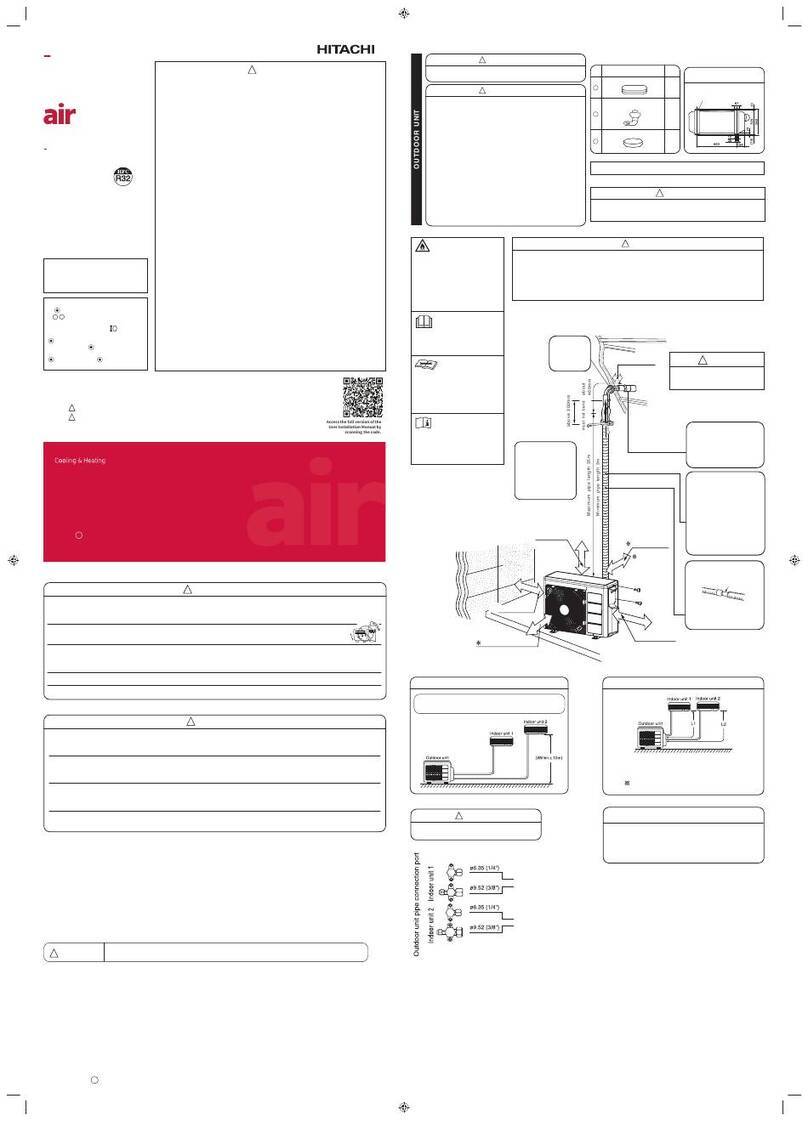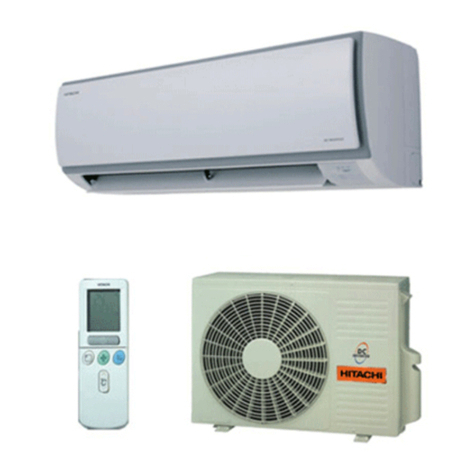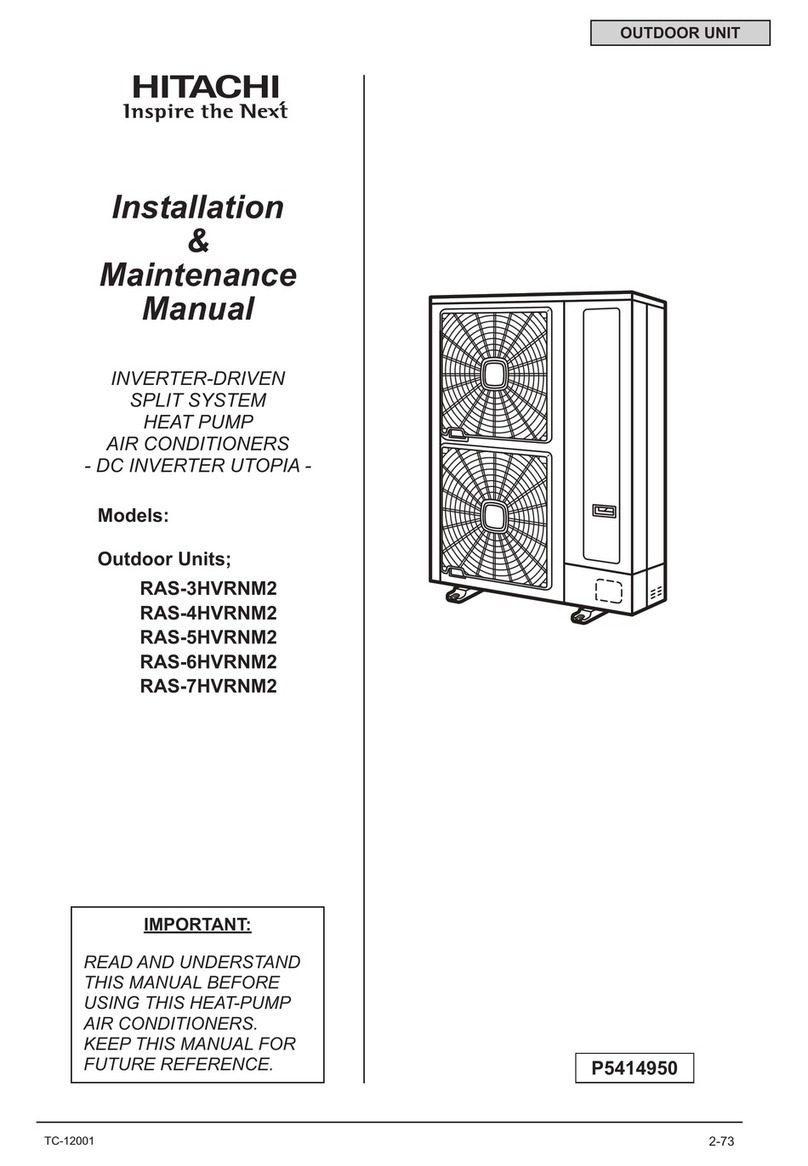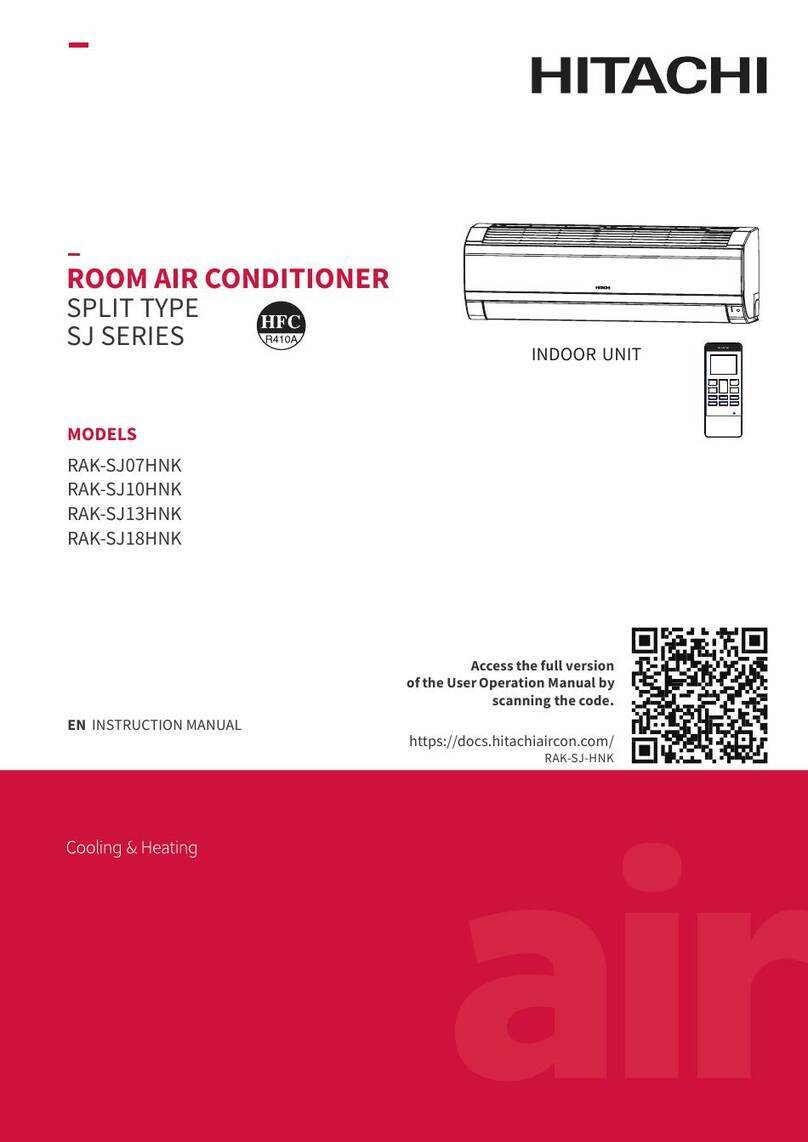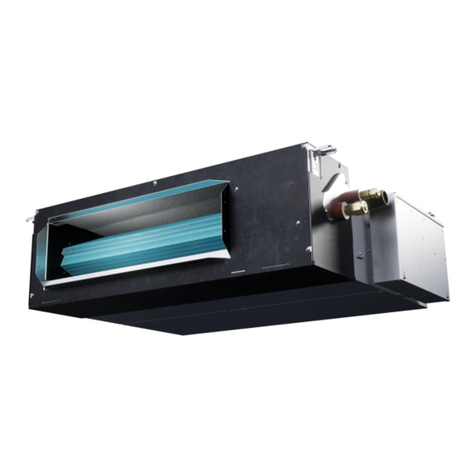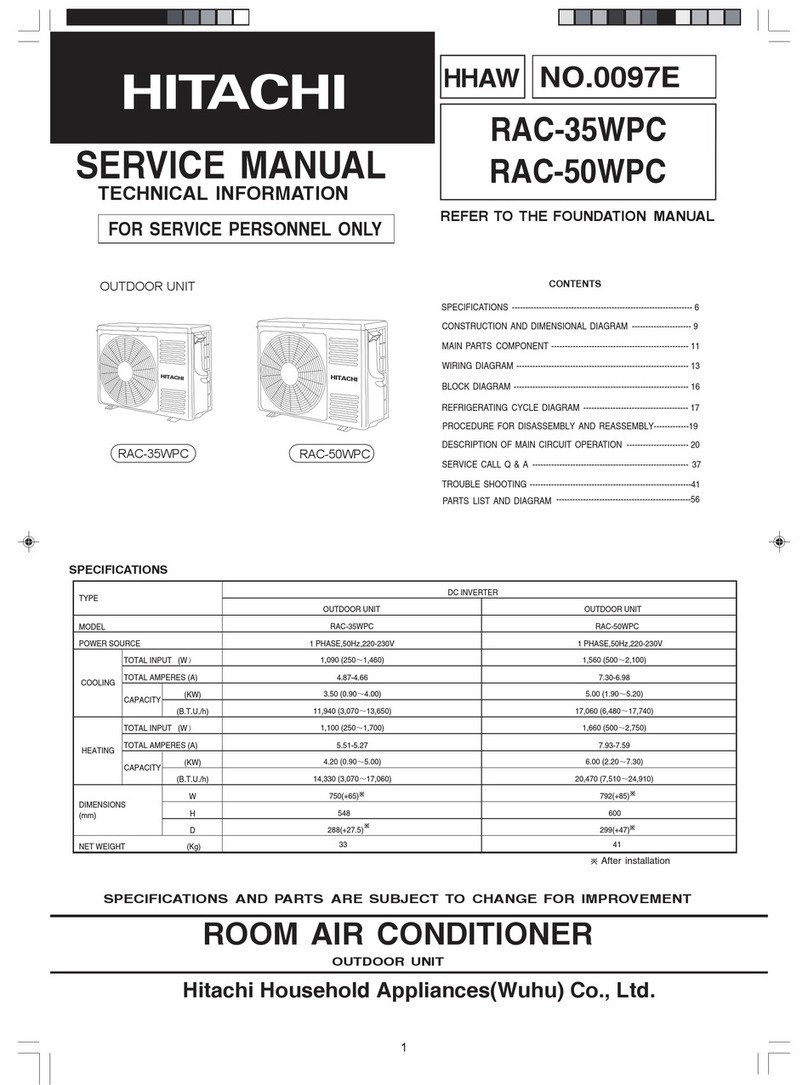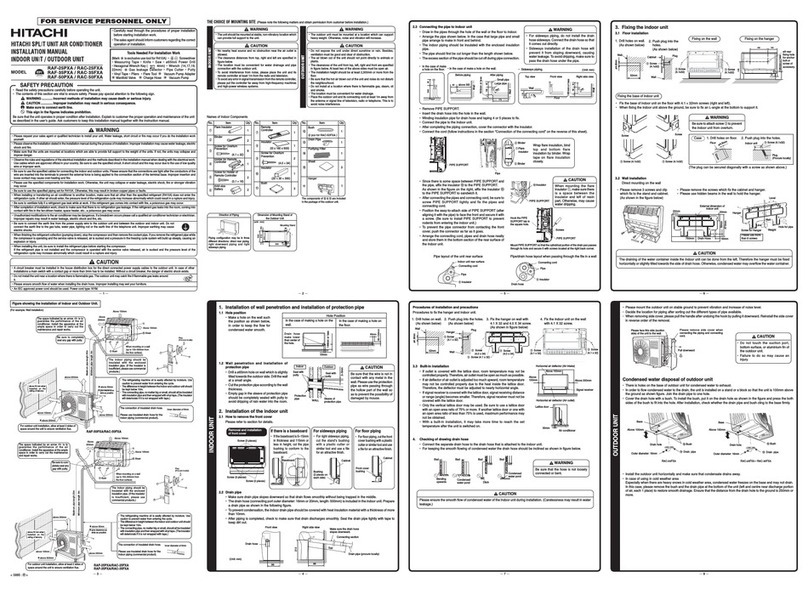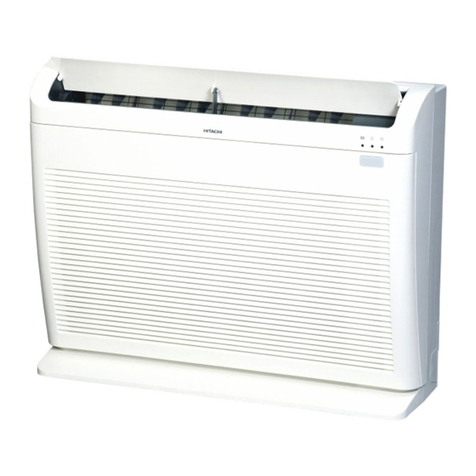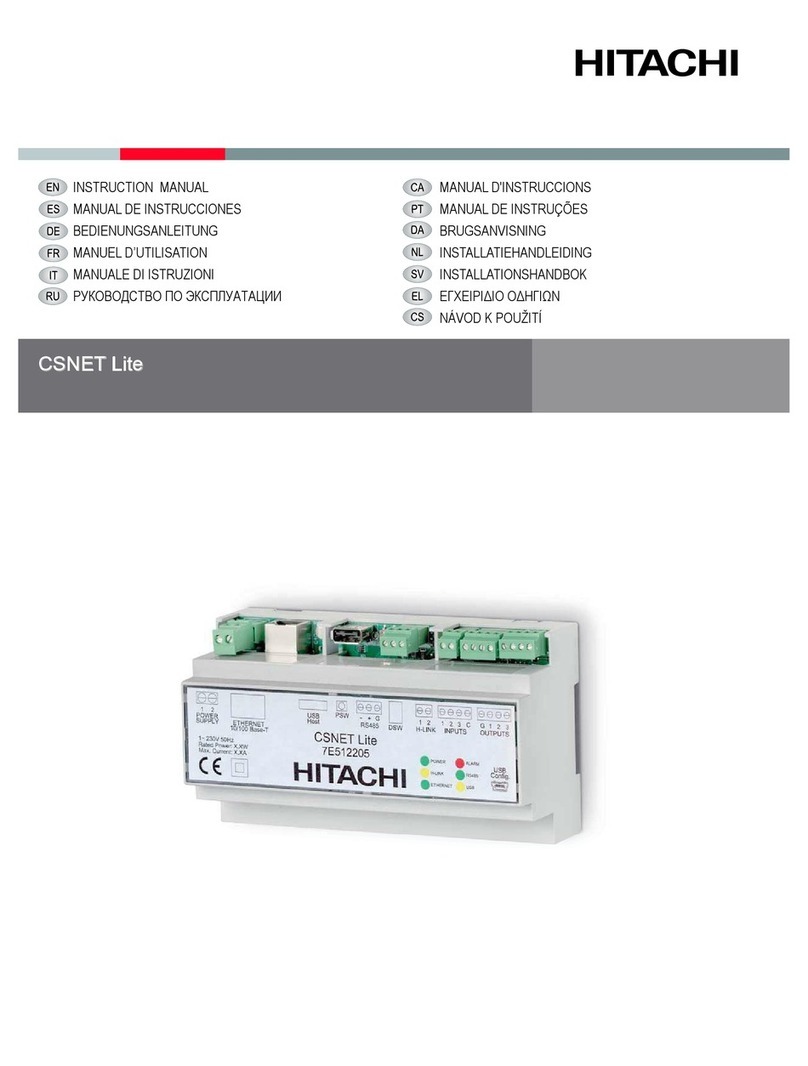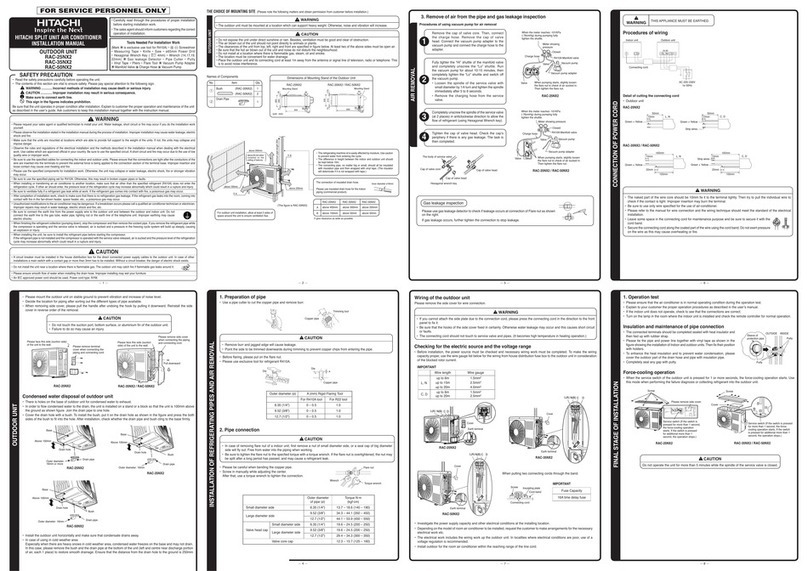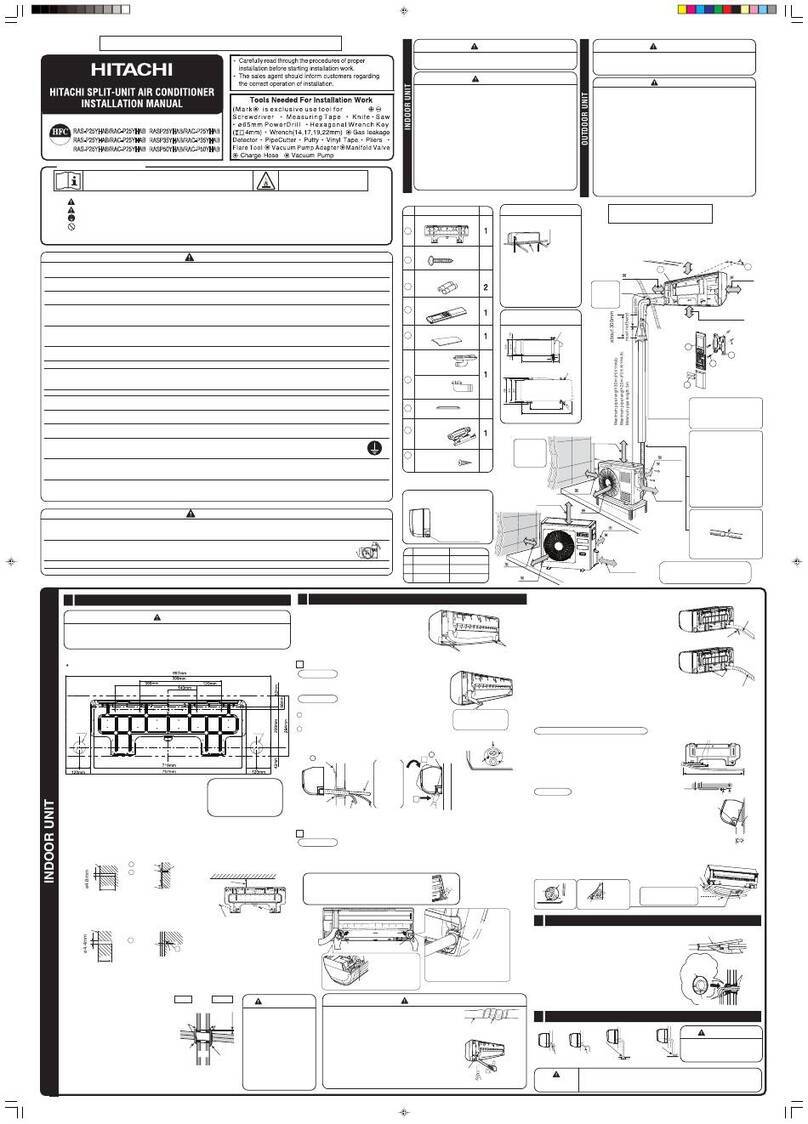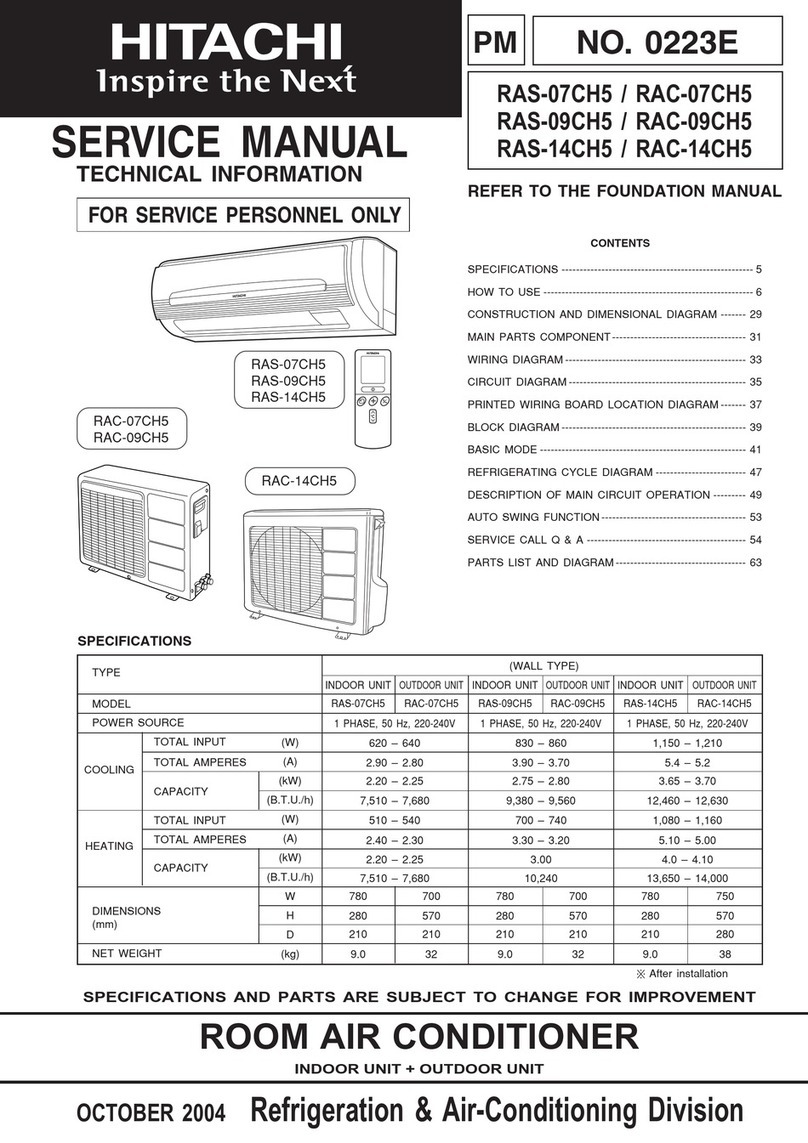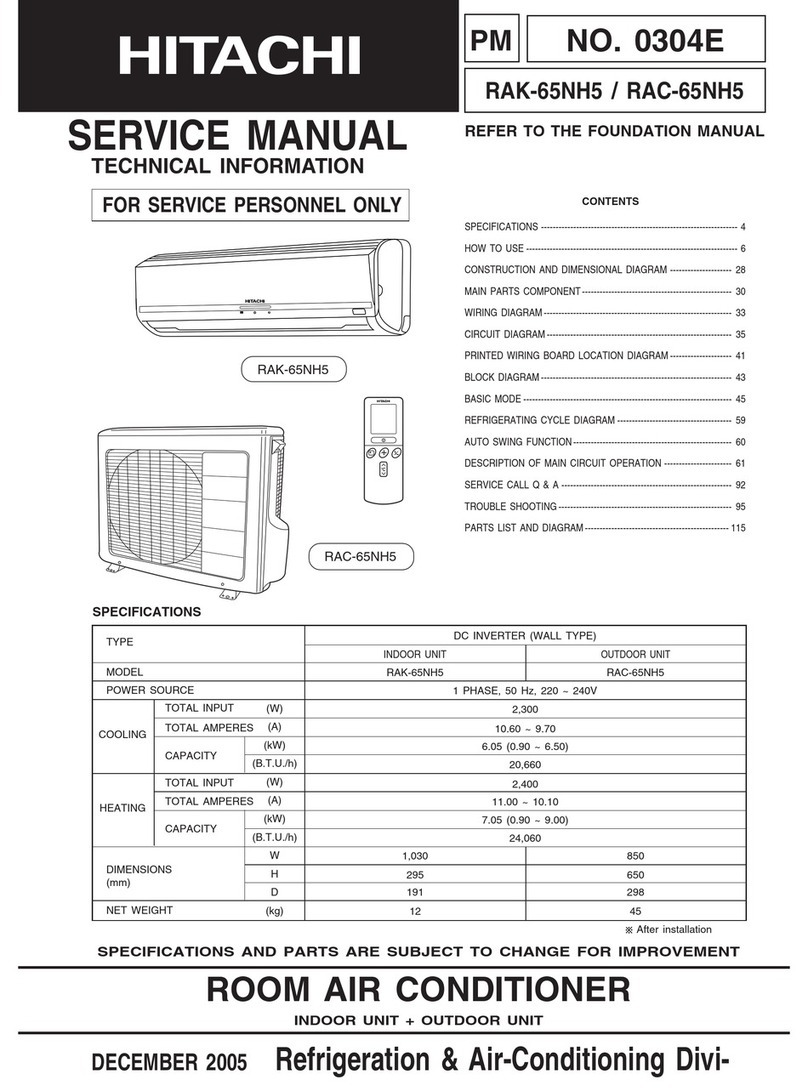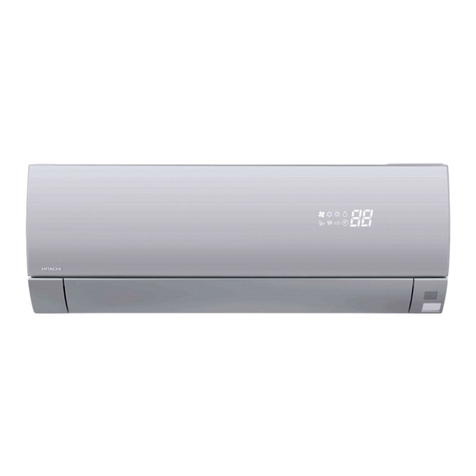
6.6. No ignition sources
• No person carrying out work in relation to a refrigeration system which involves exposing any pipe work that contains or
has contained ammable refrigerant shall use any sources of ignition in such a manner that it may lead to the risk of re
or explosion.
• All possible ignition sources, including cigarette smoking, should be kept sufciently far away from the site of installation,
repairing, removing and disposal, during which ammable refrigerant can possibly be released to the surrounding space.
• Prior to working, the area around the equipment should be checked to make sure that there are no ammable hazards or
ignition risks. “No Smoking” signs shall be displayed.
6.7. Ventilated area
• Ensure that the installation area outdoors or that it is adequately ventilated before dismantling the system or conducting
any hot work.
• Ventilation shall be kept during the period that the work is carried out.
• The ventilation should safely disperse any released refrigerant and preferably discharge it externally into the atmosphere.
6.8. Checking the refrigeration equipment
• Where electrical components are being changed, they shall be t for the purpose and the correct specication.
• At all times the manufacturer's maintenance and service guidelines shall be followed. If in doubt, consult the
manufacturer's technical department for assistance.
• The following checks shall be applied to installations using ammable refrigerants:
-The charge amount is in accordance with the room size within which the refrigerant containing parts are installed;
-The ventilation machinery and outlets are operating adequately and are not obstructed;
-If an indirect refrigerating circuit is used, the secondary circuit shall be checked for the leak of refrigerant;
-Marking of the equipment should be visible and legible. Illegible markings and signs shall be corrected;
-Refrigeration pipe or components are installed in a position where they are unlikely to be exposed to any substance
which may corrode refrigerant containing components, unless the components are constructed of materials which are
inherently resistant to being corroded or are suitably protected against being so corroded.
6.9. Checking electrical devices
• Repair and maintenance of electrical components shall include initial safety checks and component inspection
procedures.
• If a fault exists that could compromise safety, then no electrical supply shall be connected to the circuit until it is
satisfactorily solved.
• If the fault cannot be corrected immediately but it is necessary to continue operation, an adequate temporary solution
shall be used.
• This shall be reported to the owner of the equipment so all parties are advised.
• Initial safety checks shall include:
-That capacitors are discharged: this shall be done in a safe manner to avoid possibility of sparking;
-That no live electrical components and wiring are exposed while charging, recovering or purging the system;
-That there is continuity of earth bonding.
7 Repairing sealed components
• During repairs of sealed components, all electrical supplies shall be disconnected prior to any removal of sealed covers,
etc.
• If it is absolutely necessary to have an electrical supply for equipment during servicing, then a permanently operating form
of leak detection shall be located at the most critical point to warn a potentially hazardous situation.
• Particular attention shall be paid to the following to ensure that by working on electrical components, the casing is not
altered in such a way that the level of protection is affected.
• This shall include damage to cables, excessive number of connections, terminals not made to original specication,
damage to seals, incorrect tting of glands, etc.
• Ensure that the device is mounted securely.
• Ensure that seals or sealing materials have not degraded in such a manner that they no longer serve the purpose of
preventing the ingress of ammable atmospheres.
• Replacement parts shall be in accordance with the manufacturer's specications.
SAFETY PRECAUTIONS
HO2019290HA
2
